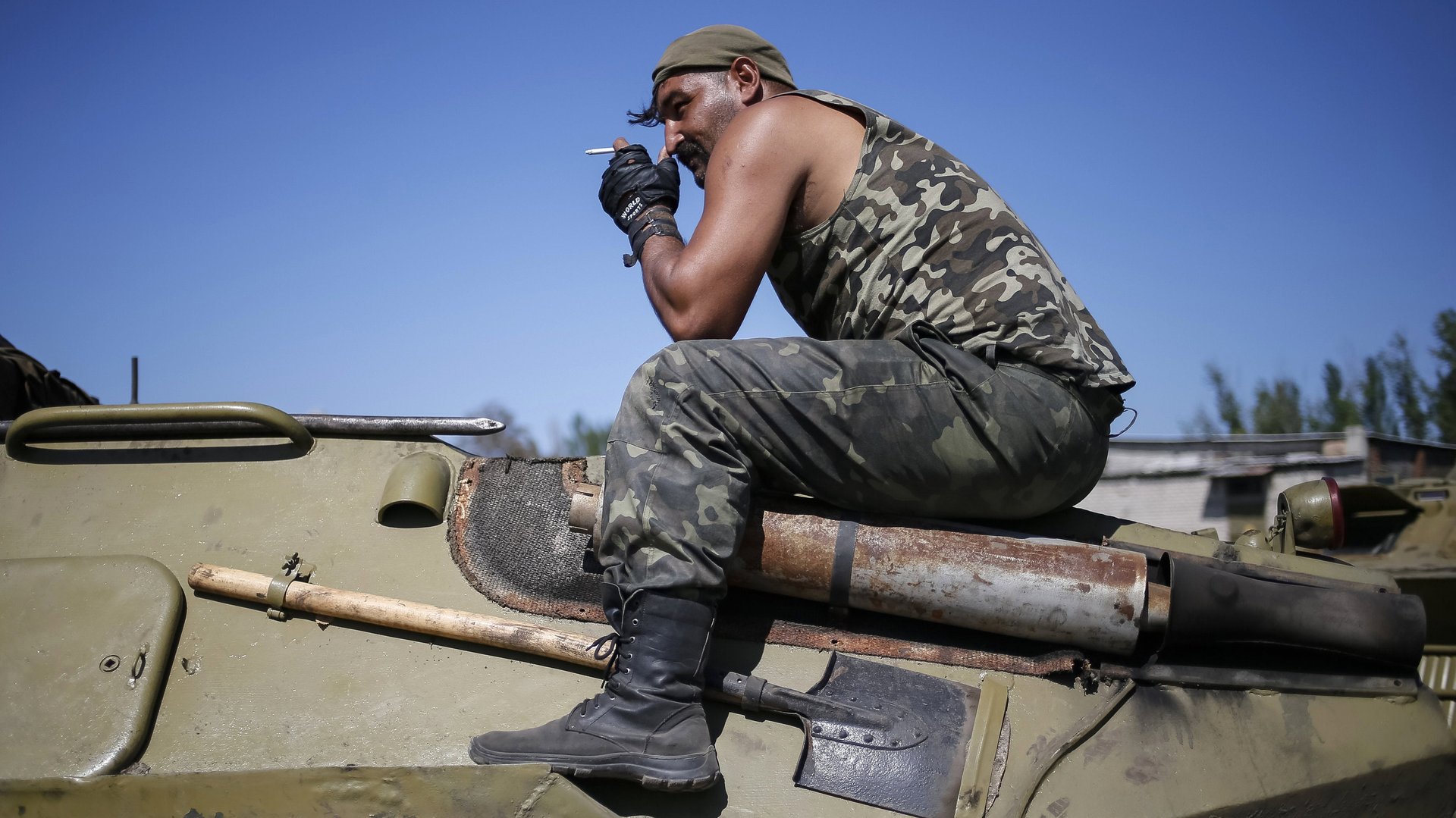The Ukraine ceasefire ignores the most important question
The ceasefire signed today by Ukraine’s combatant forces seems to lack any resolution on the pivotal issue underlying the war—whether Ukraine will have the right to follow the political and economic path it chooses. Unless there’s another announcement forthcoming, that’s why the truce is unlikely to hold.


The ceasefire signed today by Ukraine’s combatant forces seems to lack any resolution on the pivotal issue underlying the war—whether Ukraine will have the right to follow the political and economic path it chooses. Unless there’s another announcement forthcoming, that’s why the truce is unlikely to hold.
In Minsk, Ukraine and the Russian-backed Ukraine separatists agreed to a ceasefire consisting of 12 parts, according to an announcement. Generally speaking, it appears to halt the fighting, allow for a humanitarian corridor to evacuate the wounded, and may allow for an exchange of prisoners. The accord was based on a seven-part plan written out in longhand on a plane to Ulan Bator yesterday by Russian president Vladimir Putin. His version called for Kyiv’s forces to withdraw out of artillery range of eastern Ukrainian cities such as Donetsk.
In a note, Eurasia Group’s analyst Alex Brideau said neither side is likely to pull back sufficiently to satisfy the other, nor to disarm. Significantly, neither today’s accord nor Putin’s draft mentions the status of Russian forces and armor on the ground in eastern Ukraine.
The most important issue is why no one will pull back. It is because neither draft begins to unravel the political tension underlying the five-month conflict.
In a nutshell, Kyiv is seeking political affiliation with Europe, including possible membership in the European Union. Putin rejects this aim, saying effectively that he sees it as a Trojan Horse for eventual membership in NATO, an outcome that he will not abide.
Given these incompatible aims, Putin prefers a federated eastern Ukraine region that can veto any attempt by Kyiv to realize its European aspirations. Short of that, his forces can use eastern Ukraine as a staging point to destabilize other parts of the country.
As for Kyiv, president Petro Poroshenko, facing parliamentary elections next month, is highly unlikely to give in to Putin’s political demands and relinquish Ukraine’s right to sign up for the EU.
Which brings us to NATO, meeting today in Wales. The alliance agreed to form a fast-reaction military force aimed fairly explicitly at any incursion by Russia into a NATO member nation. “Should you even think of attacking one ally you will be facing the whole alliance,” said NATO secretary-general Anders Fogh Rasmussen. That seemed to be a riposte to Putin, who said a few days ago, “It’s best not to mess with us.”
But talk is talk and today’s moves, at least as they appear at the moment, do not seem to portend a conclusion to the tensions. As Brideau said in his note: “A frozen conflict with at least sporadic violence remains the most likely long-term scenario, which means long-term tension between Ukraine and Russia, and Russia and the West.”